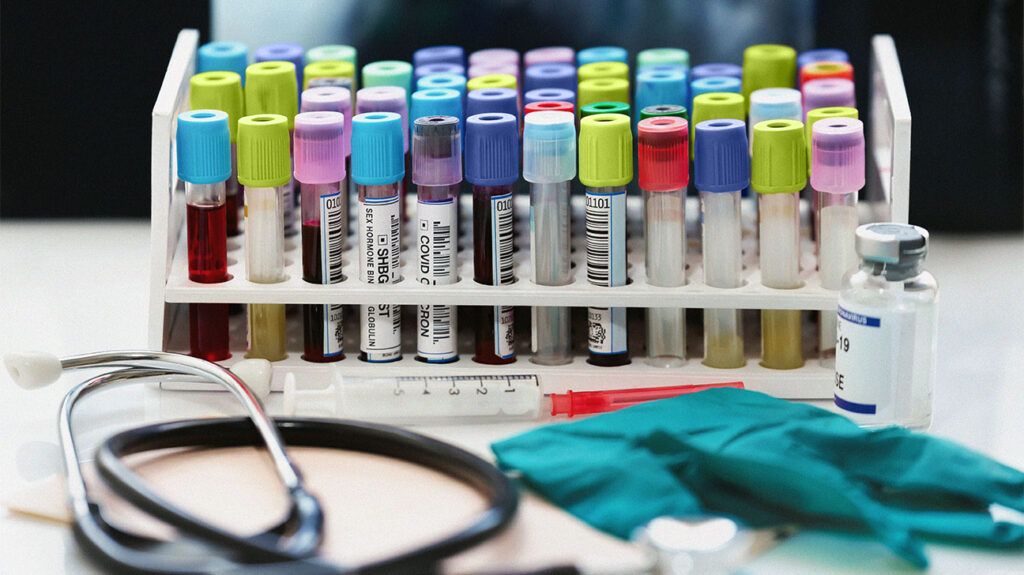Necrotizing cellulitis is a type of bacterial skin infection that can spread and destroy the skin and underlying tissues. It is a medical emergency as it can progress rapidly and lead to severe complications.
The speed of progression can vary depending on a person’s health, the type of bacteria involved, and the timeliness of medical intervention.
This article looks at the symptoms of necrotizing cellulitis, its causes, and its treatment options. It also examines a person’s outlook and when to contact a doctor.

Necrotizing cellulitis,
Necrotizing cellulitis is a type of necrotizing soft-tissue infection (NSTI). When the infection spreads rapidly, it can cause tissue death within the soft tissues and the skin, called necrosis.
The appearance of necrotic skin can vary depending on the cause and stage of the necrosis.
Early symptoms of necrotizing cellulitis include:
- fever
severe pain- warmth and thickening of the area of affected skin
As the infection progresses, a person may experience the following in their skin:
- Color changes: The skin may turn shades of red, black, brown, purple, or blue. A purple color indicates a later stage of the condition.
- Texture changes: The affected skin may become hard, leathery, or flaky. It might also feel thickened or firm to the touch.
- Blisters or ulcers: Blisters, ulcers, or open sores may develop on the necrotic skin.
- Surrounding inflammation: The area around the necrotic tissue might be inflamed or swollen.
- Fluid discharge: There may be discharge or weeping from the area, particularly if an infection is involved.
During the late stages of the infection, a person can also experience:
- low blood pressure
- a rapid heart rate
- changes in levels of alertness
Necrotizing cellulitis results from bacteria that invade the skin, usually through a break in the skin or a wound.
It often develops
It can enter the body in the following ways:
- Cuts and abrasions: Even minor skin injuries
can provide an entry point for bacteria. - Surgical wounds: Postoperative wounds can become sites of infection.
- Insect bites: Bites can break the skin and introduce bacteria.
- Ulcers: Chronic skin ulcers, such as diabetic ulcers, are potential entry sites.
A person may have an increased chance of developing necrotizing cellulitis if they have a condition that makes it easier for bacteria to enter the body or a condition that weakens the immune system.
Conditions that increase a person’s risk include:
- skin conditions such as Athlete’s foot or eczema
- obesity
- chronic conditions, including diabetes, HIV, liver disease, and kidney disease
Certain medications that weaken the immune system can also increase the risk, including:
- chemotherapy
- corticosteroids
- medications to help prevent the body from rejecting an organ transplant
Diagnosing necrotizing cellulitis typically involves a combination of clinical evaluation and laboratory tests.
The doctor will ask about symptoms, onset, any recent injuries or surgeries, and underlying health conditions. They will also perform a thorough examination of the affected area can assess the severity of the infection, the extent of skin involvement, and signs of tissue necrosis
The diagnostic process helps to distinguish it from other conditions, such as less severe forms of cellulitis or more severe conditions like necrotizing fasciitis.
People are usually admitted to the hospital for close monitoring and treatment. In severe cases, care in an intensive care unit (ICU) may be necessary, especially if there are signs of systemic infection or sepsis.
The treatment of necrotizing cellulitis is a medical emergency and requires immediate and aggressive intervention to manage the infection, prevent further tissue damage, and address systemic effects.
Treatment
- Intravenous (IV) antibiotics: High-dose IV antibiotics are started when necrotizing cellulitis is suspected, even before laboratory test results are available.
- Broad-spectrum antibiotics: Initial treatment
often involves broad-spectrum antibiotics to cover a range of possible bacteria. Once culture results are available, antibiotic treatment may be adjusted to target the specific bacteria causing the infection. - Debridement: Surgical removal of dead tissue, called debridement, is often necessary to prevent the spread of the infection.
The sooner treatment is started, the better the chances of recovery.
Without prompt treatment, necrotizing cellulitis can lead to extensive tissue damage and other complications, such as blood infection, sepsis, and bone tissue infection.
Necrotizing cellulitis is a serious condition that can lead to several potential complications without prompt treatment.
These complications can range from local effects on the skin and soft tissues to systemic, potentially life threatening issues. Some of the key potential complications
- sepsis
- necrotizing fasciitis
- gangrene
- chronic wound or ulcer formation
- scarring and disfigurement
- limb loss
- organ failure
- immune system overload
- recurrent infections
Preventing necrotizing cellulitis involves reducing the chance of bacterial skin infections and managing any existing conditions that could increase susceptibility.
To prevent necrotizing cellulitis, it is important to prevent cellulitis. To do this, a person should practice the
- cleanse any cuts, scraps, or wounds immediately with soap and water
- apply an antibiotic ointment and cover the wound with a clean bandage
- maintain good personal hygiene, including regular handwashing
- monitor any wounds for signs of infection
It is also important for a person to follow the doctor’s advice and take any prescribed medications to help manage conditions such as diabetes.
Due to its rapid progression, anyone who suspects they have cellulitis should seek medical attention.
Prompt treatment, typically involving intravenous (IV) antibiotics and possibly surgical intervention, is essential for a better outcome.
Necrotizing cellulitis is a type of bacterial skin infection affecting the skin and underlying tissues.
It is a medical emergency as it can progress rapidly and can result in severe complications.
Treatment might involve removing the dead tissue, treating any infection, and addressing any underlying health issues that led to the necrosis.
